No matter what your workout split is, it is likely that your hamstrings aren't getting enough attention as they deserve! Luckily, we have compiled a list of the best hamstring exercises to help you build optimal lower body strength.
Contents
- Traditional deadlifts
- Hex bar deadlifts
- Single-leg Romanian deadlifts
- Glute bridges
- Hamstring curl with sliders
- Barbell hip thrusts
- Bulgarian split squats
- Cable pull-throughs
- Nordic hamstring curls
- Sumo squats
- Lateral lunges
- Kettlebell swings
- Kettlebell ski swings
- Leg curls on a machine
- Stability ball curls
- Why hamstring strength is important
This muscle group, which consists of three separate muscles — the semimembranosus, semitendinosus, and biceps femoris — works with your glutes to propel you forward when you run and walk and upward when you jump. (Like when you sink three-pointers every Saturday in your pickup games!)
Recommended Videos
Difficulty
Moderate
Duration
20 minutes
What You Need
Barbell and weights
Hex bar
Dumbbells of varying weights
Sliding discs
Cable machine with adjustable height
Kettlebells
Leg curl machine
Stability ball
We’ve rounded up the best hamstring exercises to incorporate into your workout routine if you want to run faster, jump higher, squat heavier, or simply develop more sculpted, meaty legs. Ease into it, though, and remember to stretch, especially if you’re a beginner or if it’s been a while since you’ve set foot in the gym — the hamstrings are prone to cramps and strains.
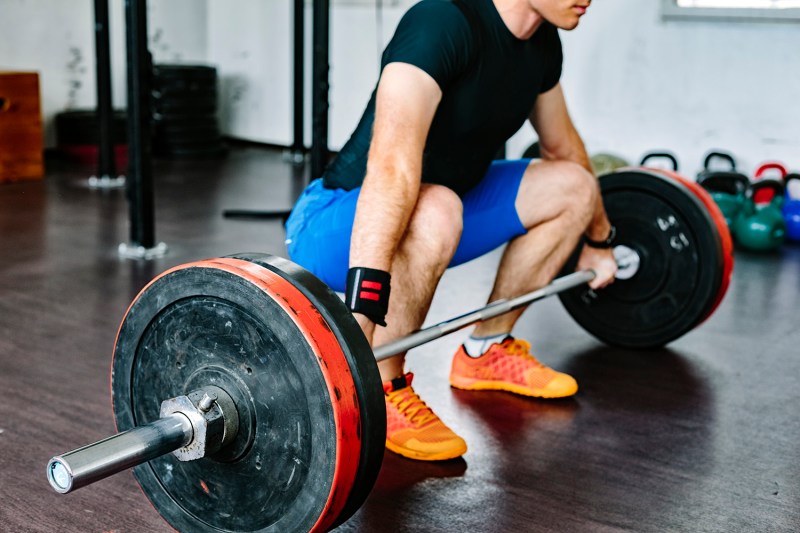
Traditional deadlifts
The deadlift is a foundational move in the gym and can be considered the king of posterior chain (glutes, hamstrings, spinal extensors, and calves) exercises. Mastering the deadlift will be crucial for strengthening and building your hamstrings. The move is essentially a hip hinge, and as soon as you have mastered the proper technique, you can really load the bar to stimulate muscle growth.
Step 1: Stand with your feet shoulder-width apart, your arms down at your sides, and a barbell in front of your ankles.
Step 2: Sit your hips back as far as possible and bend your knees just enough to reach and grab the bar.
Related
Step 3: Engage your core to lift the bar while you raise your body up to the tall standing position. Your back should stay straight and the bar should track up along your shins.
Step 4: Slowly lower the bar back to the floor by sitting your hips back. Keep your chin up and gaze forward during the move.
Step 5: Perform 6 to 8 reps per set.
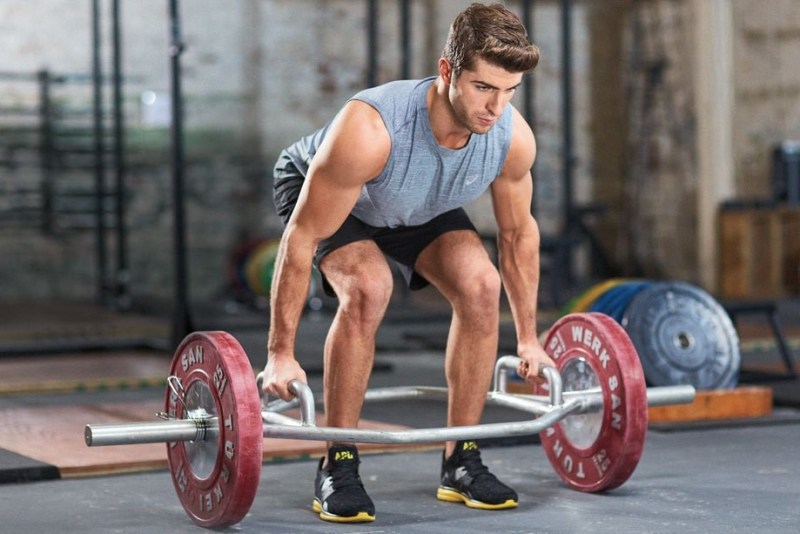
Hex bar deadlifts
The advantage of this variation on traditional deadlifts is that the hex bar allows you to use a neutral grip, which relieves stress on your upper body and allows you to lift more weight. Because you’re able to load your muscles with more weight, they are pushed that much harder, and the stimulus to get stronger is greater. The result? Even bigger gains!
Step 1: Stand inside the loaded hex bar with your feet shoulder-width apart.
Step 2: Brace your core as you squat down and grab the handles on either side of the hex bar.
Step 3: Squeeze your glutes and hamstrings to extend your hips and knees to stand upright, keeping your back straight.
Step 4: Slowly lower the hex bar back to the floor by sitting your hips back.
Step 5: Repeat 6 to 8 times.
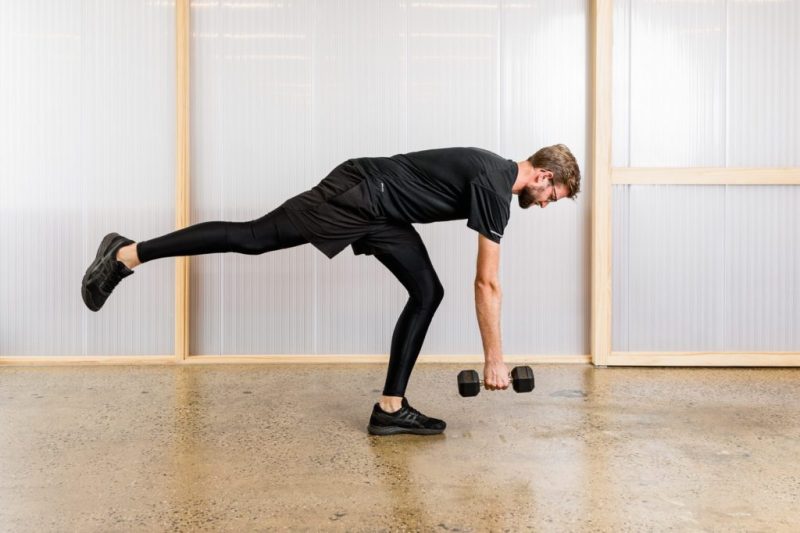
Single-leg Romanian deadlifts
Single-leg Romanian deadlifts provide all the excellent posterior chain recruitment benefits of standard deadlifts while improving your single-leg stability, which is critical for injury prevention and functional performance.
It can be tricky to master, especially if you struggle with balance and coordination, but stick with it. It’s a highly-effective exercise for your entire posterior chain and a functional move that will help push you toward becoming the athlete you want to be. According to a research study conducted by ACE Fitness, it's one of the top three most effective hamstring exercises.
Step 1: Stand with your feet shoulder-width apart, knees slightly bent, chest up and proud, arms at your side, and a dumbbell in your right hand.
Step 2: Bring your left arm out to your side for balance and engage your core.
Step 3: Bend your left knee (the one on your standing/support leg) about 20 degrees to activate your hamstrings and glutes while you lift your right leg off the ground.
Step 4: Contract your glutes, and hinge from your hips to bring your torso towards the floor, keeping your gaze on the floor to prevent hyperextending your neck. Your right leg should extend behind you as a counterbalance.
Step 5: Reach the dumbbell in your right hand down towards your left foot until you feel enough of a stretch in the hamstrings of your supporting leg.
Step 6: Engage your core and glutes to come back up, extending your hips until they are fully locked out. If you need to regain your balance, you can touch your right foot back down to the floor. Otherwise, keep it lifted and move into your next rep.
Step 7: Complete 10 reps per side per set.

Glute bridges
Bridges are a classic exercise for developing glute and hamstring strength. Beginners should start with both legs together, but as you get stronger, progress the move to a single-leg bridge by lifting one leg off the mat.
Step 1: Lie on your back with your knees bent and feet flat on the floor as if you were going to perform abdominal crunches. Cross your arms over your chest.
Step 2: Press through your heels to lift your hips up until your body is in a straight line from your knees to your shoulder blades.
Step 3: Hold for a full breath, contracting your glutes and hamstrings.
Step 4: Lower back down.
Step 5: Repeat 20 reps or 15 reps per leg.

Hamstring curl with sliders
This exercise is an easy way to work your hamstrings and glutes at home, in a hotel, or even at the park, because all it requires are a pair of easily transportable sliding discs – one of the most affordable pieces of portable workout equipment around.
Step 1: Lie face-up on the floor with your arms at your sides, palms down, and your legs extended out straight. Each heel should be positioned on a sliding disc.
Step 2: Squeeze your hamstrings and glutes to lift your legs off the ground until your glutes are one to two inches off the floor. This is your starting position.
Step 3: Pressing your heels down into the sliding discs, lift your hips as you slide your heels towards your glutes until your heels are under your knees.
Step 4: Slide your heels back out to starting position while keeping your glutes lifted, and repeat.
Step 5: Complete 15 reps.
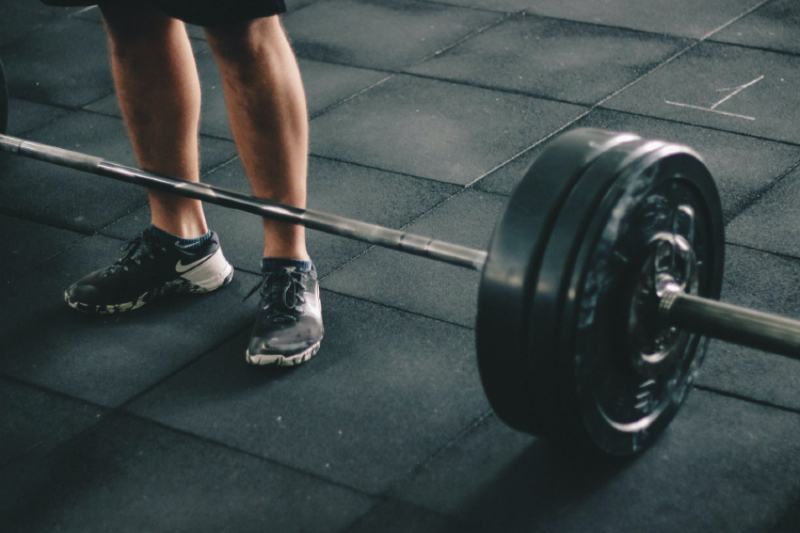
Barbell hip thrusts
This exercise ups the intensity of glute bridges by requiring additional hip extension and loading your posterior chain with weights.
Step 1: Place your shoulder blades on the long side of a bench with your body bridging off the side so that your knees are bent 90 degrees, your feet are shoulder-width apart and flat on the floor, your core and glutes are engaged, and your hips are up in a tabletop position.
Step 2: Hold the barbell across your hips.
Step 3: Raise your hips up until you reach the top position, where your thighs are parallel to the ground for each rep. Lower your hips back toward the floor before bringing them back up again.
Step 4: Complete 10 controlled reps per set.
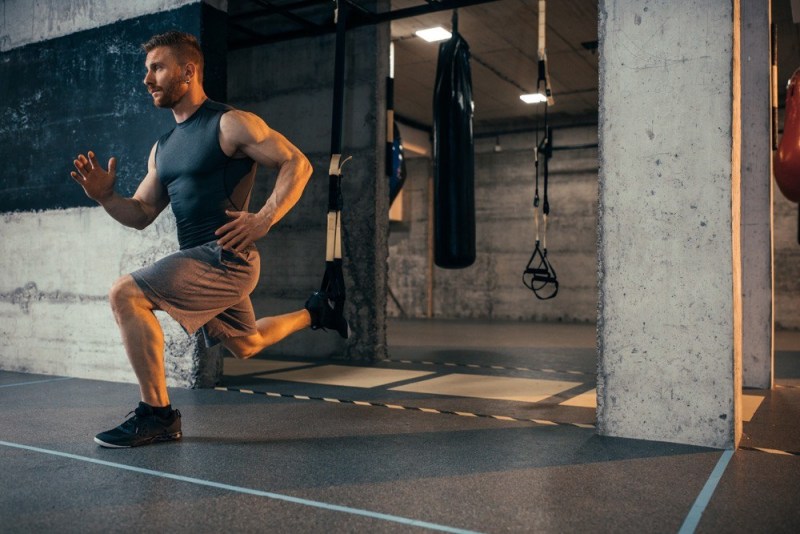
Bulgarian split squats
Split squats are great for strengthening your lower body, core, and spinal extensor muscles, and this variation, which elevates your rear foot, increases the activation of your hamstrings. Because it’s a unilateral exercise, the Bulgarian split squat requires coordination and balance, while also placing a greater demand on your muscles, so it’s a really effective move to add to your lineup on leg day.
Step 1: Stand about 3 feet in front of a bench, facing away, with the top of your rear foot up on the bench behind you.
Step 2: Your legs should be shoulder-width apart. Your front foot should be far enough forward that when you drop into a lunge, your front knee does not extend beyond your toes.
Step 3: You can load this squat by holding dumbbells in each hand with your arms extended down at your sides.
Step 4: Keeping your shoulders back and core engaged, bend your front knee to drop into a split squat/lunge.
Step 5: When the thigh of your front leg is parallel to the ground, press through your heel to return to the standing position.
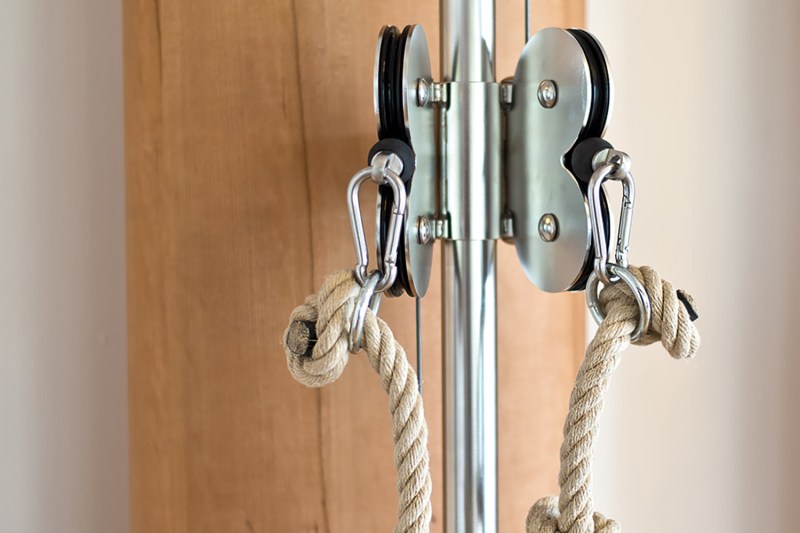
Cable pull-throughs
Similar in movement to a deadlift, cable pull-throughs train the hamstrings, glutes, and lower back. To add these to your leg day routine, you’ll need a cable machine with an adjustable height. Find one in the gym or invest in one for home use.
Step 1: Set the pulley on your cable machine to the lowest setting and pick your desired weight.
Step 2: Facing away from the cable machine, grab the pulley attachment between your legs with your palms facing each other.
Step 3: Still holding on to the pulley attachment, stand up straight and take a few steps away from the cable machine, until the pulley begins to lift the weight off the rack. Have your feet pointed straight ahead and slightly wider than shoulder-width apart.
Step 4: Keeping a neutral spine and legs straight or slightly bent at the knee, bend at the waist and push your hips back toward the machine until you feel a stretch in your hamstrings.
Step 5: Pause for a moment, and then stand up straight again, squeezing and activating your hamstrings and glutes at the top of the movement.
Step 6: Complete 15 reps.

Nordic hamstring curls
You’ll need a partner or something to lock your heels under for this exercise, and while the actual movement you perform is minimal, you will definitely feel your hamstrings screaming if you do this exercise correctly.
Step 1: Kneel on a mat facing away from a partner who will be holding your feet and ankles secured to the ground. (Or hook them under something stationary.)
Step 2: Keep your torso upright with your shoulder blades pulled back and your chest up. Cross your arms across your chest, holding an optional weight plate against your body for additional resistance.
Step 3: Keeping your body stiff and straight, lean slightly forward from your knees, ensuring your hips stay locked in the extended position until you feel a sufficient stretch in your hamstrings.
Step 4: Contract your glutes and hamstrings to slowly pull your body back to the starting position.
Step 5: Repeat 20 reps per set.
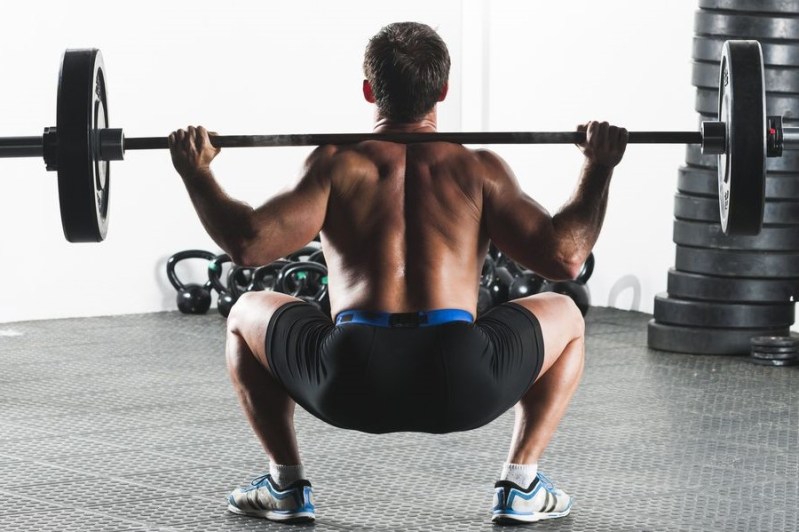
Sumo squats
Although squats primarily target the quads and glutes, the sumo variation activates your hamstrings and adductors as well.
Step 1: Hold a barbell behind your neck on your shoulders or hold dumbbells at each shoulder as if preparing to do back squats.
Step 2: Stand with your feet slightly wider than shoulder-width apart, with your toes pointing about 45 degrees outward. Your hips should also be externally rotated.
Step 3: Inhale, pushing your hips backward as if reaching your butt back to sit in a chair. Make sure your core is engaged, your chest is up, and your back is straight.
Step 4: Exhale, pressing through your heels to return to the starting position.
Step 5: Repeat 8 to 10 reps per set.
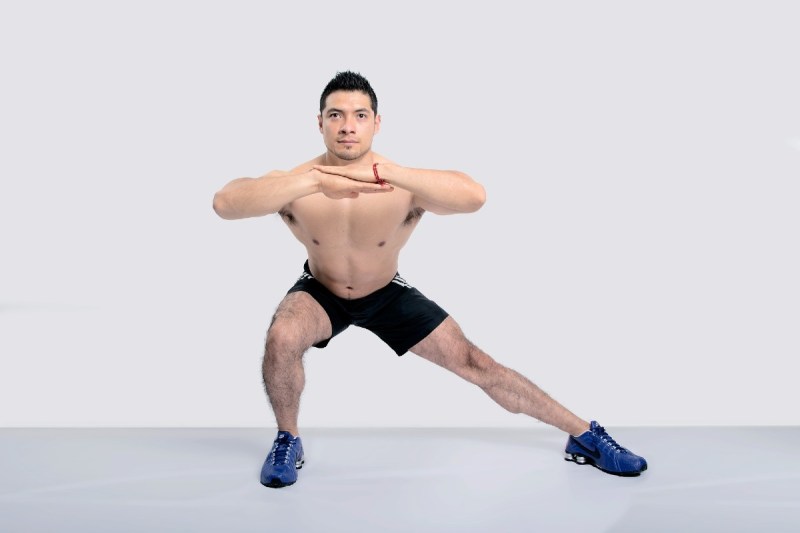
Lateral lunges
Don’t underestimate the power of the lateral lunge. This classic exercise challenges your hamstrings, quads, and glutes differently than deadlifts, squats, lunges, etc. It requires your muscles to generate force in a new direction — laterally or side to side — as opposed to straight ahead, making it a great way to round out your leg day routine.
Step 1: Start by standing up straight with your feet hip-width apart.
Step 2: Take a big step out to the side with your right leg, then bend that knee while pushing your hips back and lowering towards the ground until the knee is bent to around 90 degrees.
Step 3: Push back up to starting position to complete one rep.
Step 4: To create an extra challenge, turn it into a lateral lunge to high-knee or add weight with a dumbbell in each hand.
Step 5: Complete 10 to 12 reps on each side.
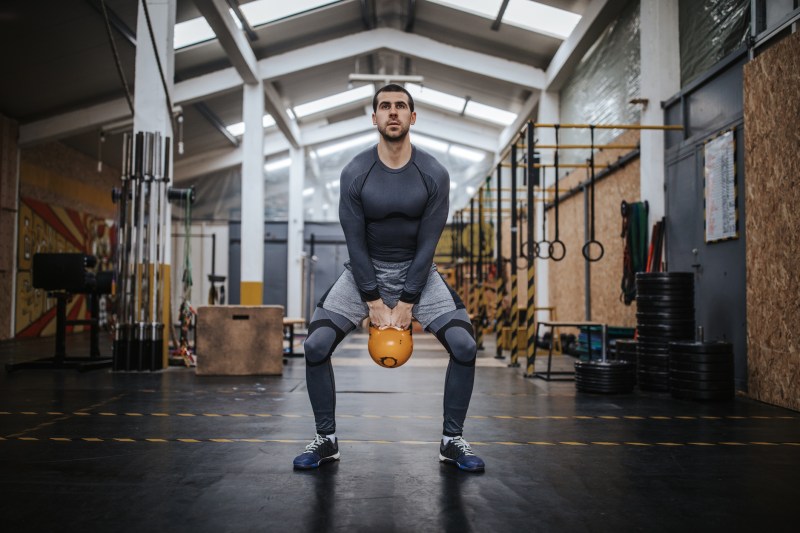
Kettlebell swings
While this may look like an upper body exercise, all of the power to swing the kettlebell actually comes from your legs. In fact, kettlebell swings have been demonstrated to be one of the three most effective hamstring exercises, according to a research study conducted by ACE Fitness. They also help with metabolic conditioning and develop strength and power in your shoulders, core, back, and glutes.
Step 1: Stand upright with your feet slightly wider than shoulder-width apart, gripping the handle of a moderately-heavy kettlebell with both hands. Your arms should be long, so the kettlebell is hanging down in front of your body.
Step 2: Keep your heels planted and engage your core and glutes while you allow your knees to bend.
Step 3: Press through your heels and explode through your hips to drive the kettlebell upward to chest height and your arms are fully extended.
Step 4: Control the kettlebell as it descends, loading your hamstrings. It should swing backward behind your legs somewhat.
Step 5: At the end of the arc of the swing, snap your hips forward again to drive the kettlebell back up to chest height.
Step 6: Complete 12 to 15 reps.
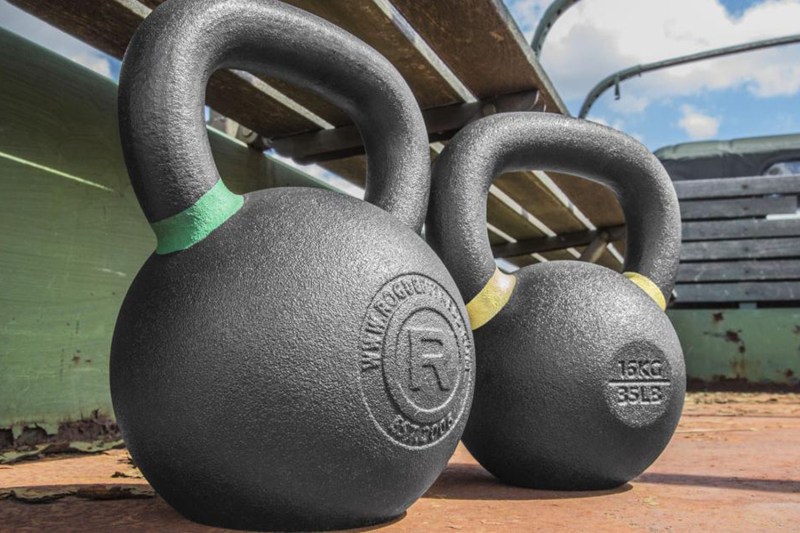
Kettlebell ski swings
While this exercise is similar to a standard kettlebell swing, it kicks things up a notch with two kettlebells instead of one. This requires more power from your hamstrings, hips, and glutes and is a great way to continue strengthening all three.
Step 1: Choose two kettlebells that are each half the weight you typically use for a standard kettlebell swing.
Step 2: Stand up straight with feet hip-width apart and your core tight.
Step 3: Keeping a neutral spine, hinge your hips while pushing your hips back, lowering your chest toward the floor, and keeping your arms locked along your torso.
Step 4: Using your hamstrings and glutes, press your hips forward while swinging the kettlebells straight out to shoulder height.
Step 5: Hold kettlebells at the top of the movement for a second or two, then hinge your hips again for one rep.
Step 6: Complete 15 reps.

Leg curls on a machine
If you have access to a gym, the leg curl machine is a good one to hit up if you want to target your hamstrings. You can use the machine either seated or prone (on your stomach). If you’re working out at home, you can try to replicate the motion by lying on your stomach with heavy ankle weights strapped on.
Step 1: Select your desired weight with the pin.
Step 2: Lie on your stomach with your feet flush against the footplates and your ankles locked under the rollers.
Step 3: Hold on to the handles on either side of the body platform.
Step 4: Contract your hamstrings and glutes to bring your heels to your butt. Make sure your hips stay flush with the machine and don’t rise up.
Step 5: Extend your knees to slowly lower the weight back down.
Step 6: Complete 10 to 12 reps per set.
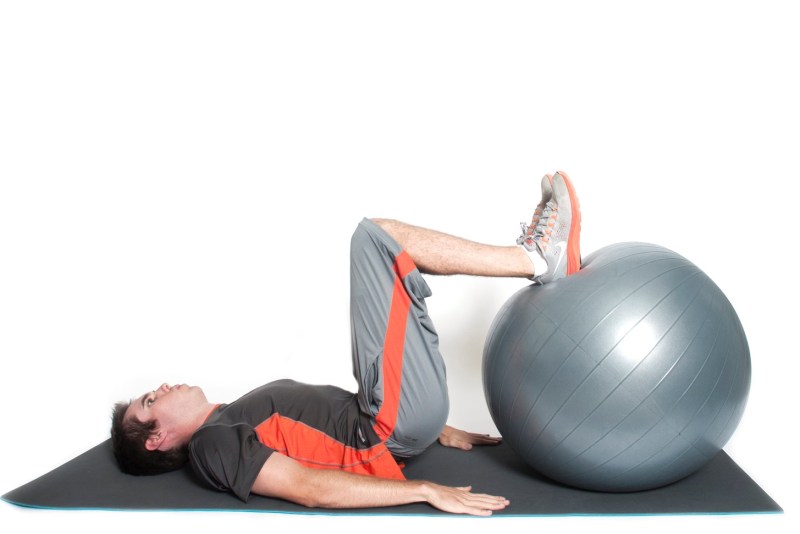
Stability ball curls
This exercise also engages your abs, glutes, and hip flexors, and since it has you lying on your back on a mat, it’s an easy move to fit in at the end of your workout before your final stretch.
Step 1: Lie on your back with your legs straight and your heels up on a stability ball. Place your arms at your sides with your palms down on the mat.
Step 2: Engage your abs and glutes to lift your hips up so that your body is in a straight line from your heels to your head. Your shoulder blades should be down on your mat.
Step 3: Engage your hamstrings and press your heels into the ball.
Step 4: Bend your knees to bring the ball towards your butt.
Step 5: Return to the starting position.
Step 6: Complete 15 reps per set.

Why hamstring strength is important
Having strong hamstrings is important for your health and everyday life. Here are some undeniable reasons to work out your hamstrings and maintain strength there.
- Walk, run, and jump: As mentioned earlier, the hamstrings are responsible for flexing the knees and extending the hips. These are essential movements for walking, running, jumping, and overall athletic performance.
- Maintain balance and stability: The hamstrings help stabilize the knee and hip joints. This is important for maintaining balance and preventing injuries. Strong hamstrings may give you better balance — think yoga moves that are all about your balance, among other things.
- Reduce the risk of low back pain: Strong hamstrings help support the low back and can reduce the risk of pain.
Hamstrings are an important muscle group that you use to walk, climb stairs, and perform any other movements that require bending your knees. These exercises can help you keep yours strong and healthy.
Editors' Recommendations
- Resistance bands vs weights: Which are better for building muscle?
- 5 effective foam roller back exercises your body will thank you for
- These are the 3 types of exercise you should be doing for better mental health, study says
- A pro fitness trainer tells us exactly how to do a lunge the right way
- The 5 best treadmill workouts to gain fitness fast (and feel great after)